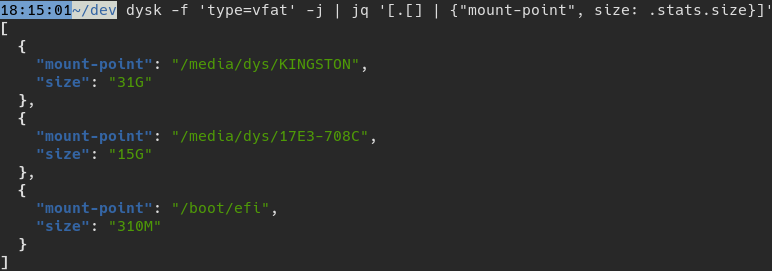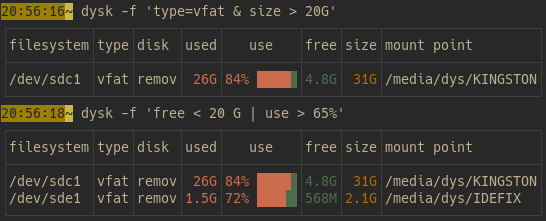Purpose
dysk is a linux utility listing your filesystems.

Usage is shown in a graphical way.
Besides traditional columns, the disk column helps you identify your "disk" (or the mapping standing between your filesystem and the physical device) :
remov: a removable device (such as an USB key)HDD: a rotational diskSSD: a solid state storage deviceRAM: an in-memory device (such as zram)LVM: a device mapped to one or several disks using LVMcrypt: a crypted disk
By default, only the "normal" devices, the ones you're usually interested about, are shown, but you can see the other ones with the -a option.
All sizes are normally based on the current SI recommendations (1M is one million bytes) but can be changed with --units binary (then 1M is 1,048,576 bytes).
Tables
The default display of dysk is a table, which can be configured with the columns of your choice.

See Table for the definition of the columns and the syntax for choosing them, or on how to sort rows.
The table can also be exported in CSV.
JSON
dysk --json outputs the result as JSON which can be used for your own scripts or programs.

Filters
The query syntax lets you specify the filesystems you want:
